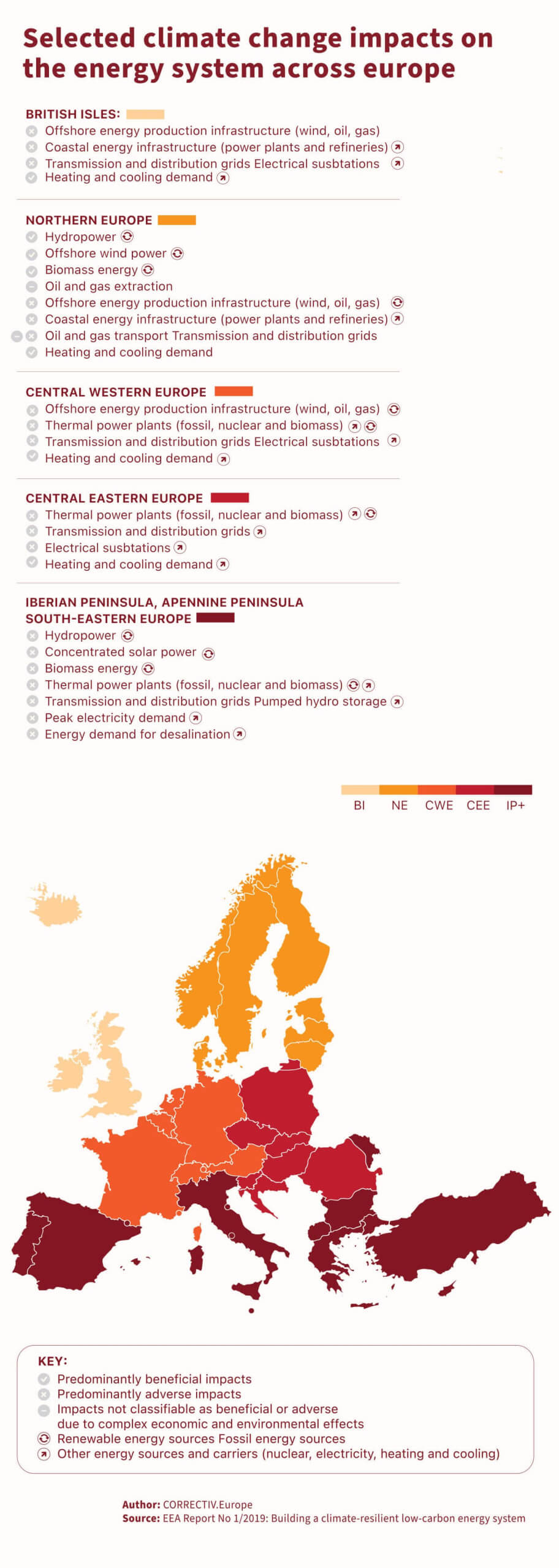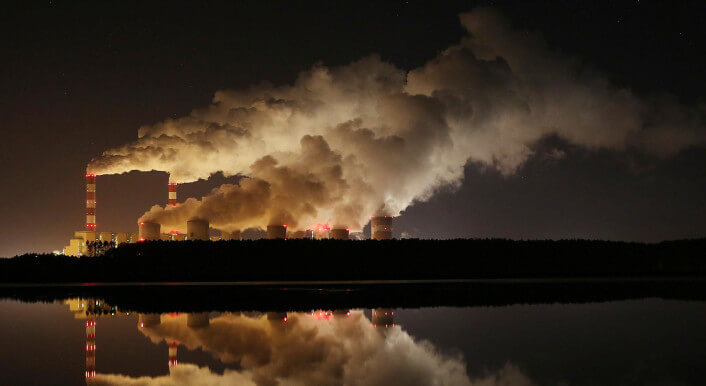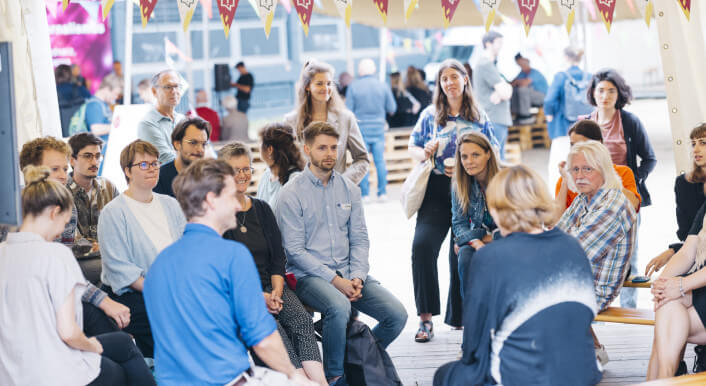Europe On Fire: How Rising Temperatures Are Threatening Energy Supply
Hotter summers pose a serious health risk. They also threaten the stability of energy supplies throughout Europe. CORRECTIV.Europe shows on a detailed map which regions are affected the most.

Climate change has a side effect that is easily overlooked in the face of the torrential rains, floodings and heatwaves that have troubled many European countries in past months. As CORRECTIV.Europe’s research shows, however, equally serious consideration should be given to this potential side effect: the risk of power grid failure throughout Europe.
CORRECTIV.Europe analysed data from the Joint Research Centre of the EU to create a map of Europe’s regional average energy needs during warm and cold periods from the 1980s. These data reveal a decrease of more than 15 percent in heating needs all over Europe and a doubling in the need for artificially cooling – and even considerably more in the southern regions.
‘In southern Europe, climate change is simply more noticeable to people due to fundamentally higher temperatures’, says Dominic Royé, researcher responsible for data science at the Climate Research Foundation. Nevertheless, the entire continent is feeling the change: Based on the latest data from the World Meteorological Organisation and the EU climate agency Copernicus, Europe as a whole has been warming twice as fast as the global average since 1991. ‘With the rising temperatures, the general projected increases in cooling needs across Europe are substantial and will result in a higher power demand – especially during hot periods.’
What is the degree-days index?
Firstly, it is important to note that ‘degree-days’ are not the same as normal 24-hour days. The term ‘day’ is therefore somewhat misleading here, but is nevertheless the official term.
The heating degree-days index, compiled by the Joint Research Centre (JRC), combines the number of days when the temperature falls below a certain level (15°C or lower) and how cold it is. Days with a mean temperature of 15ºC or less are assigned a value, which is based on how many grades the outdoor temperature is below this threshold. On such days, heating is necessary to maintain a comfortable indoor environment.
Similarly, the cooling degree-days index utilises a system to measure days when use of air conditioning or a fan is necessary. In this case, only days with a mean temperature of 24ºC and above are considered.
What are heating and cooling degree-days?
The JRC evaluates air temperatures (without taking humidity into account) during two periods:
• April to September
• October to March
The cooling degree-days of the index are calculated based on the data of the first period – during warmer months – considering both outdoor and indoor temperatures. The heating degree-days are calculated based on the data of the second period – during the colder months – considering both outdoor and indoor temperatures.
The JRC then registers the mean daily temperatures during the selected months. This means they are working not with daily peak temperatures but with the average for the whole day. For example, the temperature may rise to a peak of 36 degrees in the afternoon before falling to a much more relaxed level during the night, resulting in an average temperature of just 26 degrees for the whole day. The same applies during winter; there may be a peak of -23 degrees at night, but the average for that day could still be -8 degrees.
For heating and cooling degree-days, the JRC thus registers only the mean temperature and only on days when the mean temperature is above or below the threshold (24 degrees or higher for cooling degree-days, 15 degrees or lower for heating degree-days).
Depending on the average temperatures, a value is derived which represents the number of heating and cooling degree-days
2024 was one of the hottest summers of the decade, emphasising the practical need for cooling. The rising prevalence of tropical nights and erratic jumps in temperature are especially difficult for the human body to handle, further increasing the need for cooling in our daily lives during warm periods.
For example, when it's too hot to do the grocery shopping, eight hours of work suddenly seems impossible, and the circulation goes haywire.
Demand for cooling in Germany has increased
Data analyses show, for example, that the need to artificially cool buildings in Germany during hot spells has increased more than fivefold since 1979. Meanwhile, the need for heating has fallen steadily. This decline is due to a long-term warming trend between the months of October and March. According to the European Environment Agency, the average temperature in this period has risen by at least 3.42 degrees in recent decades. In this connection, the demand for heating in Germany has fallen by 18 percent overall, representing the eleventh highest decrease of the 30 European countries considered. It is important to note that there may be considerable differences by region.
The data depict clear trends in the heating and cooling needs across Europe. The latter could even double during the 21st century, according to the British Royal Meteorological Society. This alarming trend is heavily dependent on the trajectory of greenhouse gas emissions and subsequent planetary warming.
In a European comparison, some countries are particularly striking. For instance, Cyprus stands out as the country with the most extreme conditions in terms of cooling degree-days. In 1980, the value was 362; by 2023, it had soared to 735. Similarly remarkable is the change in heating degree-days, which plummeted by 211. Malta, with similar conditions, is the only other country that comes close to these values, making both countries extraordinary in Europe. The next biggest increases ensue for Italy, Spain, Bulgaria and Greece.
Despite their close geographical proximity, there are striking differences between the developments in Spain and its neighbour, Portugal. Spain is home to some of the hottest cities in Europe, and scientists assume certain parts of the country will become much more inhospitable in the coming decades due to desert-like conditions.
Portugal is located on the Atlantic coast and, on average, does not heat up as quickly as its neighbour Spain, which is affected by the hot water from the mediterranean sea. ‘The Mediterranean region is a hotspot for climate change. Sea temperatures affect the land, too’, says Royé. ‘The Mediterranean can be likened to a hot bath.’
All over Europe, the question arises: Is the infrastructure necessary for maintaining a comfortable room temperature available in private and public spaces? Can municipalities or private individuals afford it? Can the electricity grid even guarantee the supply? And if not, what will happen?
Take Italy for example: According to online magazine efeverde, in August, teachers throughout Italy demanded the holiday period be extended by up to a month country-wide in order to avoid the heat in non-air-conditioned classrooms, where temperatures of around 35 degrees make it extremely difficult to concentrate and pose a significant health risk.
Climate and weather are not the same. But it is crucial to understand that weather can be influenced by the climate: As temperatures rise, more humidity is stored in the atmosphere. In summer, this leads to less regular rain but can trigger events such as torrential rain followed by floods, often after heat waves. In winter, the result can be an extreme amount of snowfall within a brief period. Therefore, even if winters become milder on average, it does not mean there cannot be freezing periods with black ice or heavy snowfall – and the challenges these present to humans, nature and the energy grid.
According to experts, power grids are not being adequately adapted. ‘One of the problems, not only in cooling but also in heating periods, is that energy peaks occur, which can lead to a risk of grid overload’, says Dominic Royé. ‘In extreme temperatures, the system loses efficiency on multiple levels and presents the grid with challenges.’
A power outage can affect the lines in neighbouring countries
Even though each European country is responsible for its own measures, there are agreements such as the Paris Climate Agreement and concepts such as the Green Deal uniting the member states in Europe. Climate adaptation in the EU also includes preparing the power grid to handle the expected peaks.
Europe's electricity grids are interconnected across national borders, the so-called compound grid. This means that the expansion of the network and the handling of the sources in the respective countries influence each other. To frame this explicitly: If the electricity grid is expanded in one country, this can directly impact neighbouring countries, for example if the planned line runs close to a border or even crosses it. Similarly, a power outage can affect the lines in neighbouring countries. If Italy were to suffer a shortfall, this could be covered by its neighbours.
However, this scenario is generally buffered by the compound grid. Examples can be found all over Europe during the last few years, especially in power stations running on fossil fuels or in nuclear facilities.
Climate change intensifies the load on the grid in more than one way. In recent years, nuclear power plants in France – where two-thirds of the power supply is nuclear – have repeatedly needed to scale back their production because the water in nearby rivers exceeded the water temperature limit even in early summer. This is where the European interconnected compounded grid steps in – providing enough energy to be produced in other regions or countries to make up the shortfall.
‘The worst case scenario would be a blackout’
‘But if we can no longer compensate for the shortfall because several power plants need to be shut down simultaneously due to heat waves, the worst case scenario would be a blackout’, explains Sebastian Wende-von Berg, Head of Department Grid Operation at Fraunhofer IEE. ‘We must pay attention to this when expanding the network, and ensure stable performance and diverse or more resilient energy sources.’
Whilst a significant proportion of Europe's energy consumption is attributable to both heating and cooling measures, heating measures still dominate in most countries. Energy sources include solid, liquid and gaseous fossil fuels, biofuels, electricity, and solar thermal energy. While energy consumption for cooling is much lower in most countries, it still increases due to socioeconomic and climate-related changes.
In northern Europe, energy is mostly generated from renewable sources. In central-eastern Europe, the primary sources are fossil fuels or nuclear energy – making these countries much more vulnerable to a grid overload, as the EEA also addressed in its 2019 report ‘Adaptation challenges and opportunities for the European energy system’. Overall, most heating and cooling energy in Europe is still generated from fossil fuels (66 percent in total).

‘For a stable and more climate-resilient energy supply, we need to reduce energy generation from fossil fuels and nuclear power plants as much as possible’, says Sebastian Wende-von Berg. That renewable energy sources should feature more prominently in Europe's energy mix is a view also seen at EU level.
Simply planning more nuclear plants is not a solution, according to Wende-von Berg. ‘While these are often attributed as green, we cannot ignore the CO2-intensive construction, as well as the serious negative long-term consequences and costs of running the facilities. Compared to wind and solar, they are worlds apart.’
In most European countries, modernisation of the grid is not advancing quickly due to lengthy approval processes as well as a lack of materials and personnel, according to Wende-von Berg. He calls for digitalisation of the grid and expansion of the infrastructure in many places so more energy can be transported. He concludes by saying, ‘Europe's energy grid acts like a bottleneck that keeps us from supplying power that is needed in all the households.’
In heavily populated areas, Wende-von Berg points out, networks are overloaded even more quickly since there are fewer energy sources per inhabitant. Furthermore, although various energy sources are used in homes to maintain a comfortable temperature during winter, the majority of air conditioning systems rely solely on electricity.
Accordingly, it would actually be problematic if most households in large cities such as Madrid, Berlin, or Budapest – which are destined to suffer from heat waves and the urban heat island effect – were equipped with regular movable air conditioning systems.
‘If, at the height of summer, all parties were to cook after work, switch on the TV, start the washing machine – and potentially even charge their e-car battery – while also running the air conditioning for a while to get a good night's sleep despite the tropical nights, this would exceed the capacity of the average residential building’, continues Sebastian Wende-von Berg. ‘The energy grid in Europe is still geared towards how we lived 30, 40 years ago. Widespread introduction of air conditioning systems would push the networks to or even beyond their limits.’
Some regions already have a significantly greater need for a more comprehensive supply of artificial cooling, however, especially when it comes to the sick and elderly population. One example can be found in Spain: Magazine elPlural and radioMadrid have reported several cases of temperatures inside retirement homes exceeding 31 degrees. The elderly residents and personnel frequently have nowhere to escape the heat due to a lack of functioning cooling infrastructure. The highest temperature, 34 degrees, was measured in a dining room.
Official authorities visit the institutions once a year to assess the operating conditions. In 2023, almost one in five facilities were fined in this connection by state inspectors - nearly four times as many as in 2020. Ultimately, this is at the expense of one of the most vulnerable groups of people.
‘Heat poses a risk at any age’
It should not come as a surprise to anyone that people working outdoors or in inherently hot environments, such as industrial halls, are particularly at-risk during heat waves; yet in terms of the burden of disease and death, it is really the elderly that are most affected, says Veronika Huber, researcher at Doñana Biological Station in Seville. However: ‘One should not forget that heat – contrary to cold – poses a risk at any age.’
Huber says the ability to deal with extreme temperatures also depends on socioeconomic status. She quotes a study showing that income level plays a key role. In Madrid, not everyone can afford heating or cooling, especially in poor neighbourhoods. ‘This lack of access leads to a range of health consequences, including an unambiguous increase in premature deaths during heat waves.’
The trend for future summers in the region of Madrid is clear. Over the last three decades, the cooling degree-day index calculates a rise of 109 percent for the requirement of artificial cooling in the Madrid region.
The issue must therefore also be addressed at national and local levels. In 2023, journalists from CORRECTIV, BR Data, NDR Data, and WDR Quarks sent a survey on climate impact adaptation to 400 districts and independent cities in Germany. Over 80 percent responded. One of the findings was that only a quarter of the districts and independent towns had a climate adaptation concept at the time – although many more would need such a concept.
And they are not moving fast. ‘Germany aims to develop an adaptation concept by the end of 2025," says Jonas Gerke, responsible for heat protection and climate adaptation in municipalities at Deutsche Allianz Klimaschutz und Gesundheit. ‘Some municipalities only put out flyers. Citizens as well as public authorities often seem to not take the situation seriously.’
The issue is that many municipalities and districts in Germany do not have sufficient financial or human resources, according to Gerke. In the face of multiple crises in recent years, the threat of extreme temperatures has repeatedly been pushed into the background, he claims. ‘In Germany, local authorities are poorly equipped to deal with all kinds of problems. But this is not a unique case in Europe.’
Andalusia, a region in Spain which also faces the challenge of persistently hot temperatures, is an example of a place that independently implements its own measures. According to online magazin sur, Andalusia has more than 3,000 primary and secondary schools. The Ministry of Educational Development and Vocational Training has invested 140 million euros into a sustainable cooling system for 454 schools there. In addition, schools may use the principle of organisational autonomy to relax lesson times, allowing institutions and pupils to respond appropriately to extreme temperatures. Our investigation shows that the requirement for artificial cooling has risen 70 percent since the 1980s.
‘If we had designed all our homes and municipalities in a way that didn’t require so much heating and cooling, we would have a different situation’, says Royé. In his opinion, it is also a socioeconomic problem driving social division. ‘One of the best ways to combat climate change and its impact is to tackle social inequality – certainly in addition to a steady revision of the energy network .’
Text and Investigation: Lilith Grull
Data and visualisation: Luc Martinon
Picture editing: Ivo Mayer
Infographic: Laila Shahin
Editing: Olaya Argüeso Pérez, Frida Thurm
Fact-checking: Frida Thurm
Communication: Esther Ecke, Valentin Zick
CORRECTIV.Europe is not confined to a core team but is also a network of local media professionals who work together to conduct data-based research throughout Europe.
Network members have also researched heating and cooling needs at a local level in several European countries. The local reporting will be available at correctiv.org/en/europe/.


